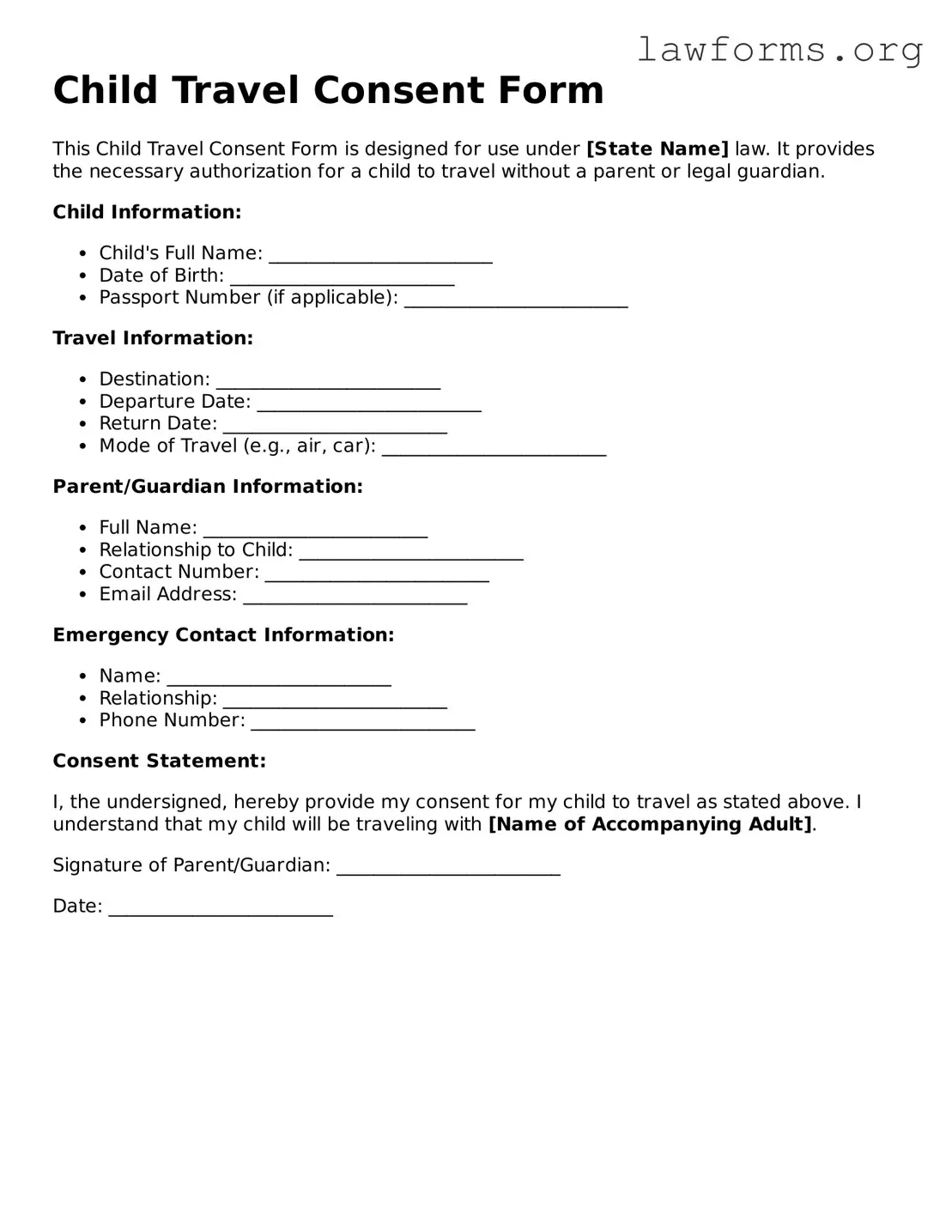Child Travel Consent Form
This Child Travel Consent Form is designed for use under [State Name] law. It provides the necessary authorization for a child to travel without a parent or legal guardian.
Child Information:
- Child's Full Name: ________________________
- Date of Birth: ________________________
- Passport Number (if applicable): ________________________
Travel Information:
- Destination: ________________________
- Departure Date: ________________________
- Return Date: ________________________
- Mode of Travel (e.g., air, car): ________________________
Parent/Guardian Information:
- Full Name: ________________________
- Relationship to Child: ________________________
- Contact Number: ________________________
- Email Address: ________________________
Emergency Contact Information:
- Name: ________________________
- Relationship: ________________________
- Phone Number: ________________________
Consent Statement:
I, the undersigned, hereby provide my consent for my child to travel as stated above. I understand that my child will be traveling with [Name of Accompanying Adult].
Signature of Parent/Guardian: ________________________
Date: ________________________
